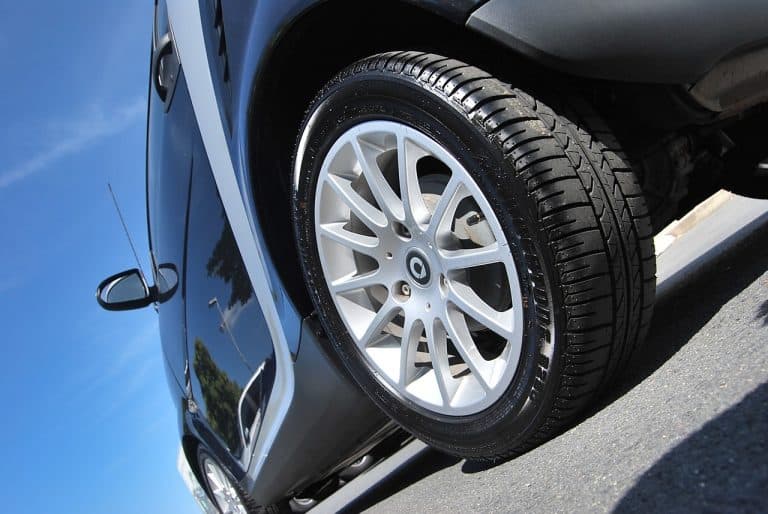Can I Drive 100 Miles On A Donut?
A donut wheel or a temporary space-saver tire is the one rather funny and disproportionally small wheel that people tend to mount on their cars when they get a flat. The reason why these exist is that they don’t take up too much space in your trunk, they are lightweight, and they are functional for a limited amount of time.

Some say that you can drive 150 miles on a donut, others say you can go a lot more than that. However, can I drive 100 miles on a donut?
Can I Drive 100 Miles On A Donut
The best thing you can do is look for the appropriate information in your owner’s manual. Either way, it is equally as important knowing how to drive on a spare as it is to know how long to do it, but most experts state that you should be good for around 50 to 100 miles.
The exact limit is dependent on many things we are going to discuss in this article, so stick around to find out what those are.
How Long Can I Drive On A Donut?
As stated above, it depends on a few factors. If you want to make the most out of your space-saver tire, be sure to consider these factors.
- Donut tire age
- The type of terrain you drive on
- The way you drive your car
- The type of car you own
How Long Can I Drive On An Old Donut Tire?
No tire is made to last forever, and that’s even more true for spare tires that typically sit in storage or the trunk until they are finally needed. Even an old unused tire can still be safe, but there are some limits to it. An older donut tire should be inspected thoroughly before you mount it, and if you see any signs of deterioration or any defects whatsoever, you should use it for emergencies exclusively.
This means that old donut tires are often not good enough to do more than 10-20 miles. If you do decide to use an old donut, be sure to drive slowly and pay close attention to the tire at all times.
How Do Different Surfaces Affect Donut Tire Performance?
You should only drive with a space-saver tire on perfect pavement, but you are able to tread slowly on gravel and mildly challenging roads. That being said, driving with a donut over rocks, or deep snow is not something you should ever do because space-saver tires simply aren’t up to the task.
Off-roading puts a lot of stress onto your tires, no matter if they are full-size or space-saver tires. The difference here is that full-size tires are able to withstand more abuse because they absorb shocks better. This means that a small space-saver tire can easily be damaged over any rough terrain.
How Should I Drive With A Donut Tire On?
As carefully as you can. While driving with a donut on, you need to be aware that you should not ever go over 50mph. You should also adjust your steering and braking inputs as you want to do both slowly. Your traction, stability control, adaptive cruise, and many other active safety systems should not be used if that is not necessary.
These may also not function properly without a full-size tire. Be sure to check the air pressure levels in all four of your tires with an obvious emphasis on the donut tire. Keep your wits about you, don’t be too aggressive with your inputs, and you should be just fine.
Can All Cars Use Donut Tires?
First of all, donut tires are not interchangeable as they are usually matched to a single car. Furthermore, donut tires should not be used on particularly heavy cars and cars that traverse challenging terrains. As such, if you own a huge truck/SUV, you should only use the spares that come with the car or ones that are recommended to you by the manufacturer.
It’s also important to mention that many performance cars are unable to use donut spares because they come with large brake disks and calipers. Many of these cars can’t even use wheels and tires under 18-19 inches because those are too small to fit the entire brake assembly.
What Happens If You Use A Donut Tire For Too Long?
A smaller tire needs to spin faster in order to achieve the same speed as a larger tire. This means that a donut tire needs to withstand higher levels of stress at all times.
This becomes an issue later on as the tread depth on the tire depletes a lot faster even though there is less of it to begin with. Space saver tires are also more susceptible to road hazards and projectiles because they are thinner and lighter.
A smaller tire is also going to cause lots of wear and tear on your suspension, brake, and transmission components, and this is why you should not drive with a donut on for too long. Donut tires are also more prone to blowouts, bulging, and even explosions.
As such, do not exceed more than 150 miles on a perfectly fine donut tire, even if everything seems to be in great order. Donut space saver tires are only designed to help in a case of an emergency, they are not designed as true long-term replacement tires.
Conclusion
If you primarily drive on smooth pavement, you don’t venture off-road, you don’t drive heavy and commercial vehicles, you should be able to do 100 miles on a perfectly functioning donut tire. You need to keep in mind that older donut tires should only be used in emergencies where you don’t have any other choice.
The best course of action is to always look for this info in your owner’s manual. Don’t exceed the limit recommended by the manufacturer, even when everything seems fine. You need to keep in mind that donut spare tires are replacement tires that should only be used when you are not able to use a full-size tire.





